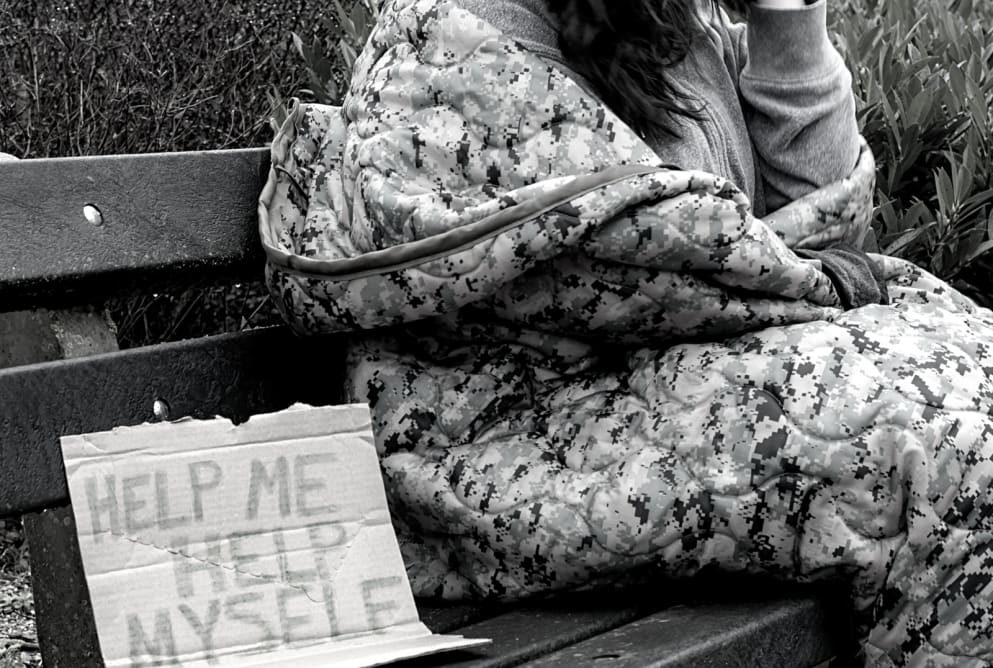Something we’ve always been passionate about here at Simon on the Streets is raising awareness and educating others about the very real challenges of those facing homelessness. Unfortunately, a big part of this is working hard to dispel the negative, not to mention harmful, assumptions and stereotypes that are very often made.
There are lots of misconceptions out there, misconceptions that do nothing but promote harmful prejudices. Homelessness is such a complex issue, and not everyone’s experiences are the same. Here we’re taking a look at some of the myths and preconceptions surrounding women and homelessness, and reinforcing why education and awareness are absolutely vital to progress.
1. Women are less likely to face homelessness
Whilst women facing homelessness may not always be visible, the fact remains that they’re much more likely to face hidden forms of homelessness.
Because they’re not always seen, many assume that this group does not exist. However, the Single Homeless Project has reported that women make up 60% of all homeless adults in temporary accommodation in England.
There’s currently no way to precisely determine how many women face hidden homelessness. The very nature of sofa surfacing and other similar forms means that women are missed. And that’s a big problem.
In this instance, out of sight simply cannot mean out of mind. Just because you can’t see these women, it doesn’t mean that they’re not there.
2. Women only make up a small percent of rough sleepers
Although on the face of it women only account for 14% of rough sleepers nationwide, we must question the reliability of the methods that are used to record this data. In England, to be counted as a rough sleeper, you must meet a specific set of criteria, so it’s likely that this number is much larger than 14%.
There’s ongoing research into how we can accurately count women in homelessness statistics. St Mungo’s and Single Homeless Project are currently working with The Women’s Development Unit in London to achieve this, developing a survey that takes into account specific patterns of homelessness.
3. Women facing homelessness are more likely to access support
Through our outreach work, we’ve often found that women feel a certain sense of stigma and shame around accessing services, sometimes more than the men we support. They’re much more likely to seek help from friends and wider family members first than from charities like us.
Fears of judgment from service providers and healthcare professionals, as well as gendered assumptions, are all big factors that deter women from accessing support.
Another important consideration is the fact that all forms of abuse, specifically domestic abuse, can often discourage women from accessing support. This might present challenges that put them in danger from perpetrators of violence, leaving them too fearful to seek support.
4. Women who face homelessness all share the same experiences
Of course, some women will have similar experiences of homelessness, and face some shared challenges. But no woman’s story is the same.
For instance, LGBTQ+ women, or those from Black and minoritised ethnic communities may have additional challenges, including discrimination and being put at a disproportionate risk of homelessness.
In addition, some women may have children that they’re trying to shield from harm, or be dealing with the trauma of having their children taken into care. There’s also the risk of sexual violence, pregnancy and numerous health concerns that many women facing homelessness have to deal with.
It’s why we don’t have a ‘one-size-fits-all’ approach to emotional and practical support, and why we understand just how vital a gendered approach to outreach is.
The more that these myths and stereotypes are perpetuated, the cloudier the reality of homelessness becomes. As this is already such a complicated issue, it will become harder to maintain sustained change, if we don’t raise awareness of the true to life circumstances that people live in.
If you’d like to help us to enact change, get involved with fundraising or take a look at our volunteering opportunities, all you need to do is get in touch.
